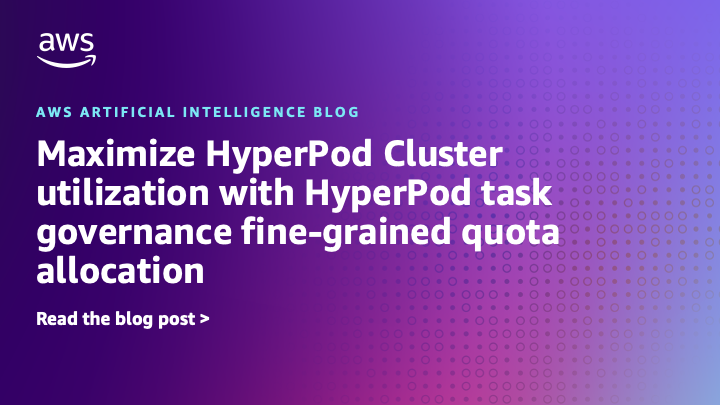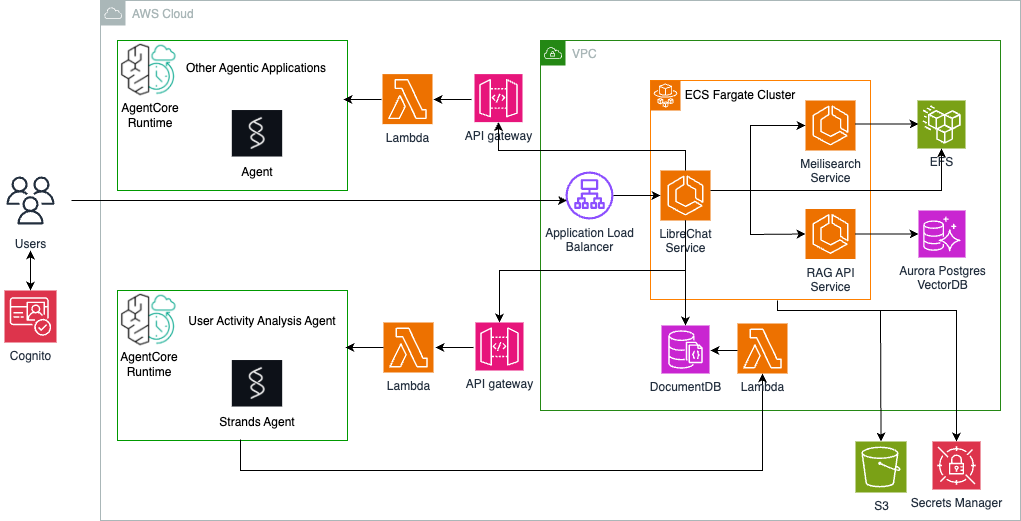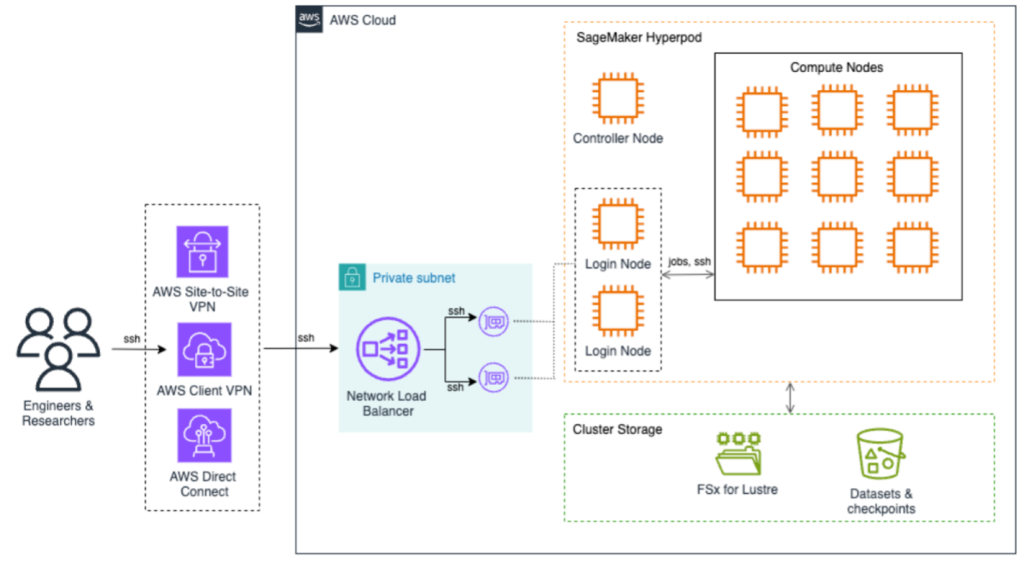Artificial Intelligence
Enabling customers to deliver production-ready AI agents at scale
Today, I’m excited to share how we’re bringing this vision to life with new capabilities that address the fundamental aspects of building and deploying agents at scale. These innovations will help you move beyond experiments to production-ready agent systems that can be trusted with your most critical business processes.
Powering innovation at scale: How AWS is tackling AI infrastructure challenges
As generative AI continues to transform how enterprises operate—and develop net new innovations—the infrastructure demands for training and deploying AI models have grown exponentially. Traditional infrastructure approaches are struggling to keep pace with today’s computational requirements, network demands, and resilience needs of modern AI workloads. At AWS, we’re also seeing a transformation across the technology […]
Accelerate your model training with managed tiered checkpointing on Amazon SageMaker HyperPod
AWS announced managed tiered checkpointing in Amazon SageMaker HyperPod, a purpose-built infrastructure to scale and accelerate generative AI model development across thousands of AI accelerators. Managed tiered checkpointing uses CPU memory for high-performance checkpoint storage with automatic data replication across adjacent compute nodes for enhanced reliability. In this post, we dive deep into those concepts and understand how to use the managed tiered checkpointing feature.
Maximize HyperPod Cluster utilization with HyperPod task governance fine-grained quota allocation
We are excited to announce the general availability of fine-grained compute and memory quota allocation with HyperPod task governance. With this capability, customers can optimize Amazon SageMaker HyperPod cluster utilization on Amazon Elastic Kubernetes Service (Amazon EKS), distribute fair usage, and support efficient resource allocation across different teams or projects. For more information, see HyperPod task governance best […]
Build and scale adoption of AI agents for education with Strands Agents, Amazon Bedrock AgentCore, and LibreChat
This post demonstrates how to quickly build sophisticated AI agents using Strands Agents, scale them reliably with Amazon Bedrock AgentCore, and make them accessible through LibreChat’s familiar interface to drive immediate user adoption across your institution.
Skai uses Amazon Bedrock Agents to significantly improve customer insights by revolutionized data access and analysis
Skai (formerly Kenshoo) is an AI-driven omnichannel advertising and analytics platform designed for brands and agencies to plan, launch, optimize, and measure paid media across search, social, retail media marketplaces and other “walled-garden” channels from a single interface. In this post, we share how Skai used Amazon Bedrock Agents to improve data access and analysis and improve customer insights.
The power of AI in driving personalized product discovery at Snoonu
In this post, we share how Snoonu, a leading ecommerce platform in the Middle East, transformed their product discovery experience using AI-powered personalization. In this post, we share how Snoonu, a leading ecommerce platform in the Middle East, transformed their product discovery experience using AI-powered personalization.
Accelerating HPC and AI research in universities with Amazon SageMaker HyperPod
In this post, we demonstrate how a research university implemented SageMaker HyperPod to accelerate AI research by using dynamic SLURM partitions, fine-grained GPU resource management, budget-aware compute cost tracking, and multi-login node load balancing—all integrated seamlessly into the SageMaker HyperPod environment.
Exploring the Real-Time Race Track with Amazon Nova
This post explores the Real-Time Race Track (RTRT), an interactive experience built using Amazon Nova in Amazon Bedrock, that lets fans design, customize, and share their own racing circuits. We highlight how generative AI capabilities come together to deliver strategic racing insights such as pit timing and tire choices, and interactive features like an AI voice assistant and a retro-style racing poster.
Build character consistent storyboards using Amazon Nova in Amazon Bedrock – Part 2
In this post, we take an animated short film, Picchu, produced by FuzzyPixel from Amazon Web Services (AWS), prepare training data by extracting key character frames, and fine-tune a character-consistent model for the main character Mayu and her mother, so we can quickly generate storyboard concepts for new sequels like the following images.
Build character consistent storyboards using Amazon Nova in Amazon Bedrock – Part 1
The art of storyboarding stands as the cornerstone of modern content creation, weaving its essential role through filmmaking, animation, advertising, and UX design. Though traditionally, creators have relied on hand-drawn sequential illustrations to map their narratives, today’s AI foundation models (FMs) are transforming this landscape. FMs like Amazon Nova Canvas and Amazon Nova Reel offer […]










